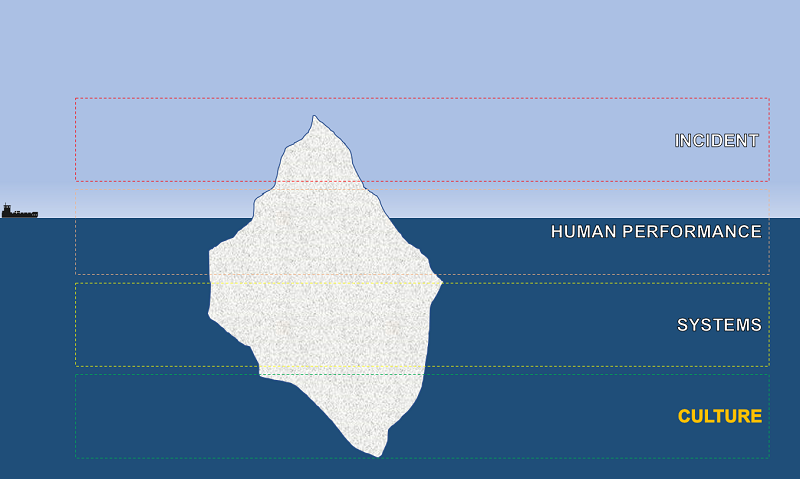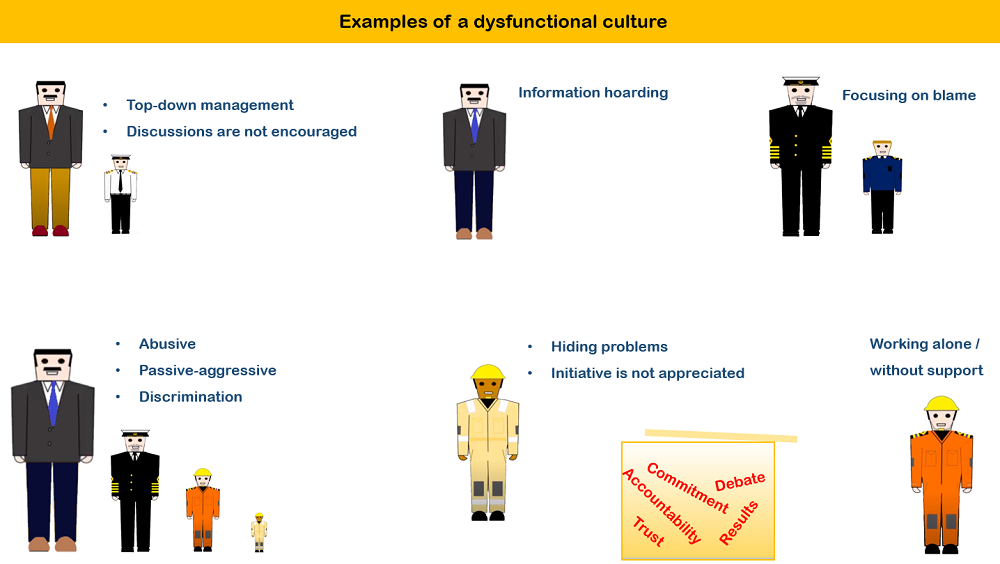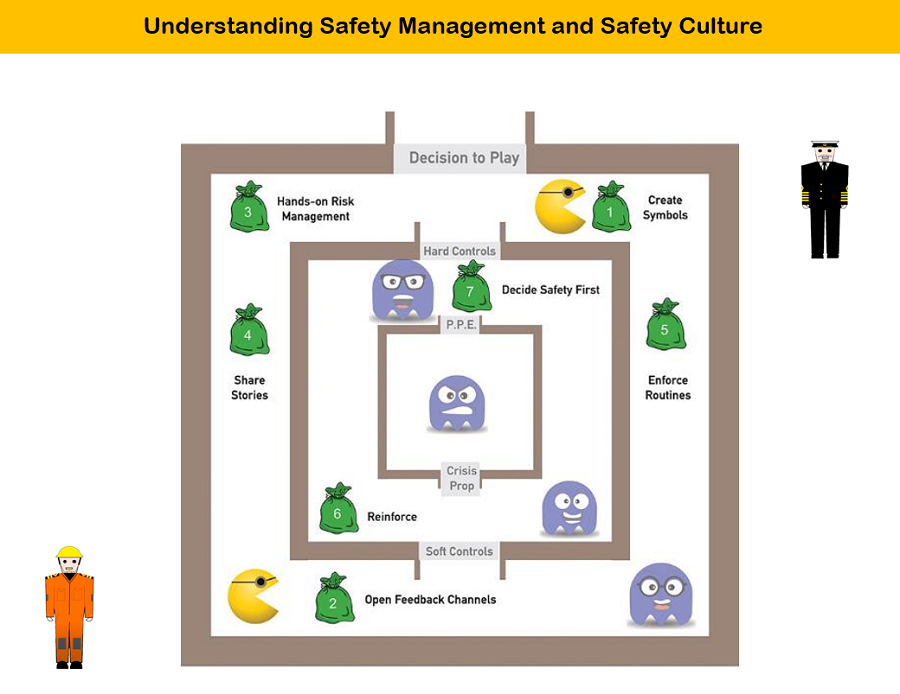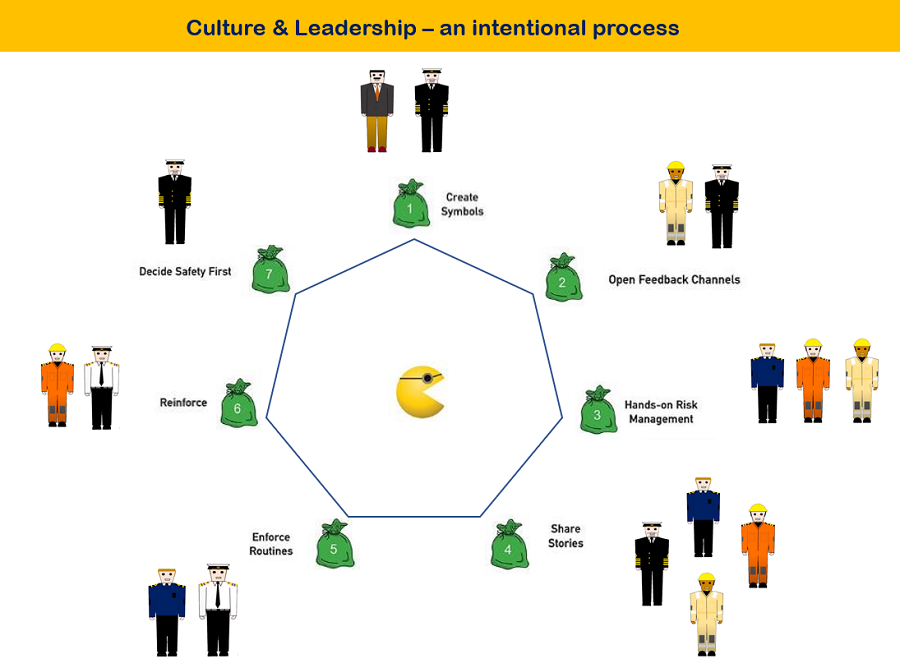This article originally appeared in Safety4Sea
A poor safety culture can beat a good system, even if its people are competent. For example, in the “Eurasian Dream” accident that occurred back in 1998, when a fire broke out in one of the cars and spread quickly to the entire ship, resulting in the ship being declared a total loss. The ship owner tried to limit his liability under the Hague-Visby Rules, but the judge decided the ship was unseaworthy. One of the reasons was that the crew were inadequately trained, and there were several indications that the culture was poor.
Using the analogy of an incident being like an iceberg; the incident is the tip of the iceberg; it is what you can see. You may even be able to draw connections with human performance and systems but the invisible core represents the culture of the environment in which the incident occurred.

Increasingly, safety culture is being mentioned in investigation reports and court judgments. The latest OCIMF human factors booklet refers to safety culture.
Many of us can relate to the below examples of a dysfunctional culture.

Culture is about humans and how we collectively shape it. The concept can be quite abstract and therefore the following model can help in understanding safety management and safety culture.
The “Safe Man Model” is based on the famous “Pac-Man” video game. The game represents the work we do in the office or on the ship which needs to be done without an incident, trying to avoid ‘the devils’. There are safety features such as hard and soft controls, personal protective equipment, and crisis preparation. But even if these controls exist, unidentified risks remain. In the game, there are ‘energy packs with which the Pac-Man, even if he gets injured or runs into a devil, gets another life, and is thus resilient. In the Safe Man Model’, these energy packs represent the key components of safety culture:
- Hands-on-Risk Management
- Create symbols
- Enforce routines
- Open feedback channels
- Share stories
- Reinforce
- Decide safety first

Feedback provides a picture of what happens onboard a ship or ashore where there are many levels of management. The real work happens at the frontline where the person is meeting the client or when the Chief Engineer engages with the PSC Officer or the SIRE inspector. These are the places where the real action happens and the people on the frontline know the actual problems and provide feedback. Often when feedback reaches the management through various filters, the feedback can get diluted, or worse, no action is taken. Organizations need to maintain robust feedback loops to sustain their culture.
There is a saying that a leader needs to know to be at the right place at the right time. Hands-on risk management speaks to leadership, to get the boots on the ground (or the deck) to see what it’s happening and guide the team in ensuring that the right thing is done, in the right way.
As humans, we have been learning from each other through stories for thousands of years. Good bonhomie and conducive settings for sharing stories make for an effective and fun way to learn.
There is no point in having a routine or a system if we cannot ensure it is implemented properly. Whether it is good or bad behaviour; these both need to be recognised. If something good has been achieved, it’s crucial that we don’t lose the opportunity to appreciate a job well done so people know that their effort is appreciated and more of this is expected. Conversely, correcting people immediately when you observe a deviation is also important.
Lastly, it is essential to show through action, and not just words, by ‘Deciding Safety First’. It is easy to talk about safety but when it comes to actually making a decision, this is where safety culture manifests. That is the chance to show what a safety culture means.
Safety culture and happiness go hand in hand. There are ways to measure, improve and get a sense of safety culture but this must be done through observation. Creating a strong safety culture is an intentional process and is the main task of safety leadership.

Here's the link to the video.Safety culture is covered in the chapter Safety Leadership in my book Golden Stripes- Leadership on the High Seas


